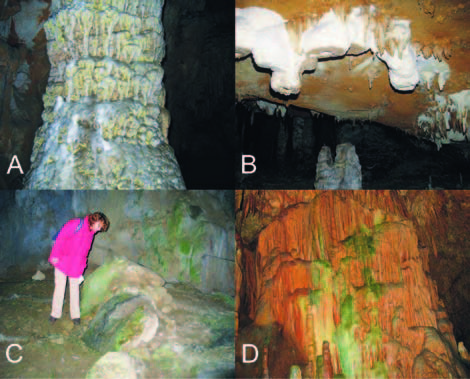Microorganisms in Hypogeon: Examples from Slovenian Karst Caves
DOI:
https://doi.org/10.3986/ac.v37i1.167Abstract
In caves microorganisms inhabit distinct habitats where they develop various interactions. As an evidence of microbial activity several features can be identified. Microorganisms are involved bothin lithogenic and litholitic processes. Besides heterotrophs in caves autotrophic organisms can be also expected. Some cyanobacteria and microalgae in caves can survive even at photon flux densities lower than their photosynthetic compensation point. In the paper up-to-date identified groups of microorganisms (bacteria, cyanobacteria, microalgae, fungi and protozoa) withtheir localities in Slovenian caves are presented. Especially bacteria from caves, as the most diverse group, offer immense biotechnological and bioremediation potential. In caves microbial biomass can be considered a considerable food source for cave-dwelling higher organisms. Caves in Slovenia offer great chances to discover new species, as was fungus Mucor troglophilus discovered in association withthe cave cricket Troglophilus neglectus.
Downloads

Downloads
Published
How to Cite
Issue
Section
License
Authors guarantee that the work is their own original creation and does not infringe any statutory or common-law copyright or any proprietary right of any third party. In case of claims by third parties, authors commit their self to defend the interests of the publisher, and shall cover any potential costs.
More in: Submission chapter




